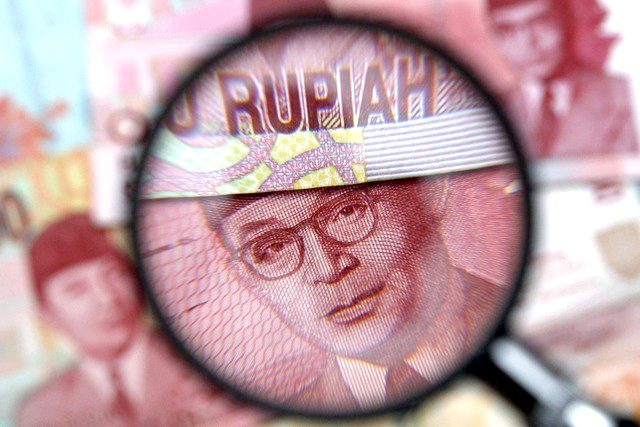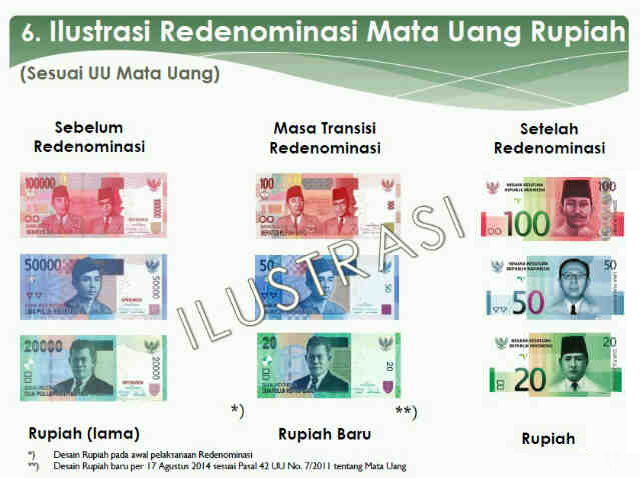Rp 1,000 = Rp 1 ?
Indonesia to Restart Talks on Fewer Zeroes For Rupiah Notes.
Asia’s second largest banknote may soon slim down by three zeroes with Indonesia planning to resume talks this month to simplify transactions in the middle-income country.
At 100,000 rupiah (roughly $9), Indonesia’s biggest bill is the second largest in the region after the Vietnamese dong. Daily transactions often ring up in millions of rupiah, and bigger figures, such as the country’s state budget or gross domestic product, are presented in units of trillions of rupiah.
That means stores must have cash registers that can handle at least nine digits, while banks’ IT systems must accommodate transactions in trillions or greater. The lengthier the number, the more likely it is for errors to occur, and that requires more monitoring from authorities.
Even before the redenomination was first floated in 2010, some coffee shops, restaurants and stores in urban areas had already started dropping the zeroes. The price of a coffee on many menus in Jakarta, for example, is printed as 25 rather than 25,000 rupiah.
Having fewer zeroes now seems practical for daily shopping or business deals, and yet the public grew concerned when Bank Indonesia first announced its intention four years ago. Many still remember what happened in 1965 when Indonesia devalued its currency from 1,000 rupiah to 1 in an attempt to battle hyperinflation. The move came just a few years after it devalued the 1,000 rupiah note to 100. Within a span of just six years, the rupiah had eroded to one-10,000th of its original value, dramatically weakening people’s purchasing power.
During a central bank event Monday, Bank Indonesia Governor Agus Martowardojo promised that dropping the zeroes “will not erode the value of the rupiah.” He then cited Turkey, which trimmed six zeroes from its banknotes in 2005, as an example of a successful redenomination.
Deliberations on the redenomination were put to a halt last year after the rupiah currency fell 21% against the U.S. dollar. At the time, officials said redenomination could only be successful if the country’s macroeconomic conditions were stable. Over the past year Indonesia’s current account deficit has improved and the rupiah has appreciated around 4% against the dollar. Recent elections, which were peaceful, are also likely to usher in more stability – making a redenomination more likely.
But it’s not just pragmatism that is driving the push for fewer zeroes, say some analysts, who point to national pride. Indonesia is the only Southeast Asian member of the group of 20 developed and emerging countries, known as the G-20, where one dollar translates to such a larger number (currently the exchange rate is 11,600 rupiah to a dollar). And that makes its economy look much weaker than its neighbors, such as Malaysia, where one U.S. dollar equals 3.16 ringgit, and even the Philippines, where 43 pesos add up to a dollar.
“Given that the redenomination project can be billed as a matter of national pride, there should not be too much drama surrounding the talks with the parliament,” said OCBC economist Wellian Wiranto.
Parliament will resume deliberations for the redenomination plan later in August before a new round of lawmakers and Cabinet officials take their seats in October. If the bill is passed, there will be a six years transition period put in place to help phase out old bills and allow new ones to enter into circulation, said Mr. Martowardojo. During that transition, both current bills and new bills would be accepted as legitimate forms of payment.
Source: Andreas Ismar / blogs.wsj




